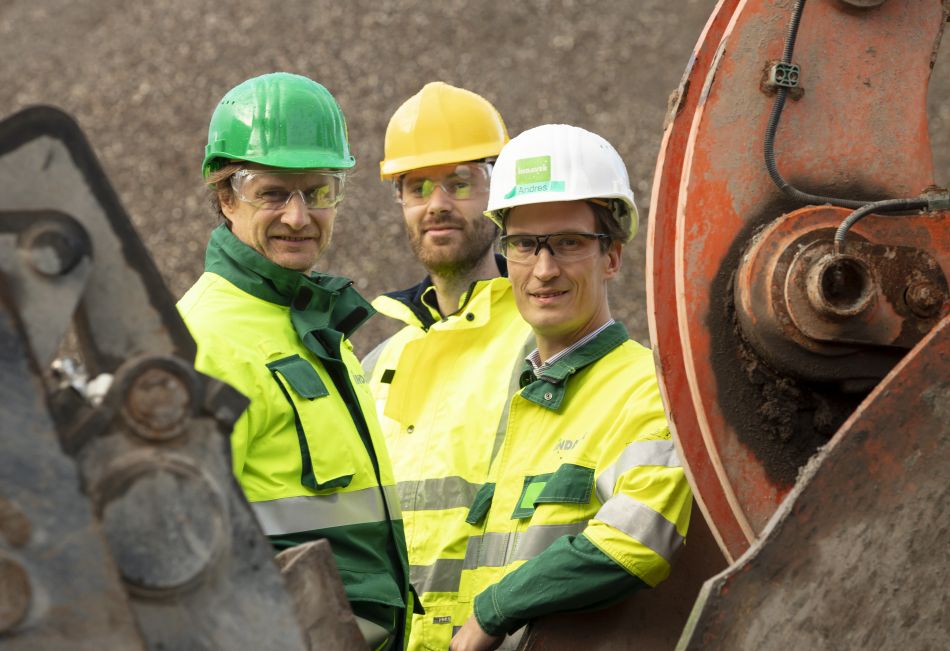A high proportion of general domestic waste in Flanders is incinerated to convert it into energy. Materials including metals and minerals are recovered from the ash that is left and reused in the material cycle to the highest possible quality. Waste processing company Indaver has partnered with VITO, Ghent University, CRH and Orbix to investigate the re-processing and use of the mineral fraction from this ash. The results of the AshCem project point to a bright future as a raw material in a range of construction products: from paving stones and other pavement elements to reinforced concrete products where they replace part of the cement to help reduce the environmental impact.
Since switching on its installation, waste processing company Indaver has already recovered a range of useful raw materials from the incineration ash of non-recyclable domestic waste. During after-treatment this bottom ash is washed, purified and sorted. 'This is how we extract the metals from it, both ferrous and non-ferrous,' says Andres Van Brecht from Indaver. 'These are valuable raw materials and we have industrial buyers for them.' What's left are mineral fractions, including granules that are already sorted by grain size. Some of them are already being reused, with applications including concrete breeze blocks, construction sub-foundations and for creating landfill sites.
Closing cycles
The AshCem project ran from 2016 to 2019 and was financed by the Vlaamse Speerpuntcluster (Flemish priority cluster) SIM as part of the MaRes programme. In this project, Indaver worked with VITO to investigate whether these mineral fractions could also be used in higher quality applications and, if so, what technological innovations would be required and what economic restrictions there might be. 'It's part of our mission to create as much value as possible from waste and to use this to help to create sustainable material and energy cycles,' says Erwin Van den Brande from Indaver. 'With that philosophy in mind, we're looking to improve the valorisation of the mineral fraction, in the form of new products with a large market.' Ghent University and the companies CRH and Orbix also participated in the multidisciplinary AshCem project alongside VITO.
One of the technological challenges during the project was finding a way to remove fine metal particles from the bottom ash, which might cause unwanted chemical reactions later on in the valorisation process and negatively affect the quality of the final application. 'Here at VITO, we looked at how to recover traces of aluminium, for example, and neutralise them with an innovative pre-treatment process,' says Ruben Snellings.
Binder and filler
The research project has opened up two new and interesting areas. Although recovered granules are already being used in (low value) concrete products, they also seem to be the ideal choice to replace sand in all kinds of high-quality construction applications. 'Research carried out by VITO and Orbix showed that they can be used as a raw material for innovative carbon-negative concrete products, where hardening is caused by the reaction with CO2 (carbonation),' says Andres Van Brecht. For the time being, that CO2 comes from other industrial processes, not from the air. 'The carbonation process takes place under increased pressure and with a raised CO2 concentration,' adds Snellings.
In the second area, the granules can also be used as a partial replacement for cement, which can drastically reduce the ecological impact of a material or use, as significant amounts of greenhouse gases are released in the production of cement. Both this 'composite cement' and the concrete products that are made with it are carefully tested to ensure that they can be processed during concrete production and that they are both strong and sustainable.
A new economic chapter
Ultimately, the AshCem project points to new products such as pavement elements (e.g. paving stones as non-reinforced compressed products) and structurally reinforced concrete (both bars and sheets). The partners involved have made industrial prototypes of all these products which have then been tested and demonstrated. In a recently started valorisation programme – working again with the same AshCem partners –potential market uses are studied and whether a new economic chapter can now be written in the research story. 'At the end of the day, we are looking for applications that are viable economically, that have a reliable impact on sustainability and that are also socially relevant,' says Erwin Van den Brande.
Indaver has now decided to renovate its installations and update the existing treatment facility for bottom ash. 'The basic concept, including the wet pre-treatment (or "washing") will stay the same,' says Andres Van Brecht, 'but focused innovations will enable us to significantly improve the purification of the granules.' Of course, this will require investment – and in a market where launching profitable and competitive alternatives is not easy. 'But factors including what we have learned from the AshCem project lead us to believe that we can recoup this,' says Erwin Van den Brande.

